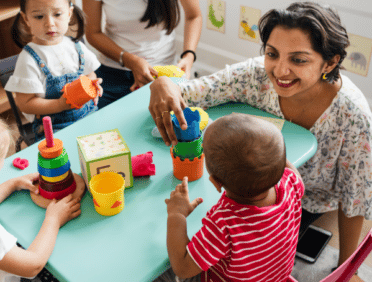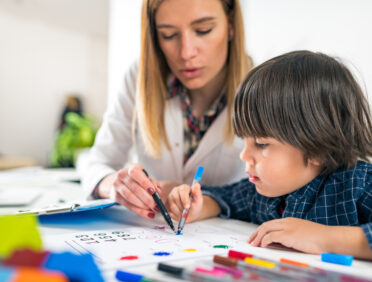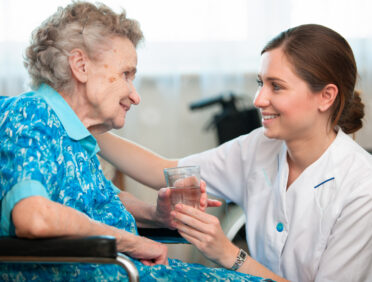The Working Together to Support Children guidance covers a wide range of topics and issues. The legislative requirements for individual services are covered, as well as a framework for each of the three local safeguarding partners, who are classed as the local authority, chief officer of police for a given local area, and a clinical commissioning group within that area. The guidance clearly outlines that it is the responsibility of these three parties working together in tandem to make sure that there are proper arrangements in place for identifying and promoting the welfare of local children, including responding to, and identifying, their needs.
The document also clearly states that the framework for the two child death review partners. This duo is the local authority, and the clinical commissioning group for that area. Together, they have a responsibility to make arrangements to review the deaths of all children normally resident within their local area and, if necessary, investigate the deaths of children not present in the local area.
As a document, this guidance replaces the official Working Together to Safeguard Children guidance from 2015.
What is Working Together to Safeguard Children?
The Working Together to Safeguard Children guidance is typically just referred to as Working Together guidance. It is a piece of statutory guidance which has been produced by the government. The document outlines how practitioners should be working with children, families and young people. It also outlines that these practitioners have to work together with each other to make sure that children and young people are kept safe from harm.
For the sake of the guidance, a “child” is defined as anybody who is under the age of 18. However, the guidance does also apply to the safeguarding of unborn children where possible.
Why Do We Have “Working Together”?
The Working Together to Safeguard Children guidance was first created and published in 1999. It outlined how all agencies and professionals should be working together to promote welfare and protect them from neglect and abuse.
The guidance was first properly revised in 2006, which was a result of a public inquiry into the death of a child called Victoria. Victoria was a child that was brought to the UK in 1999 from the Ivory Coast, and she died in Haringey in February 2000. She was only eight years old.
Prior to her death, Victoria had sustained a number of serious injuries to her person, and had been tied up for a substantial period of time. Before she died, Victoria had been in contact with a lot of different agencies, but the resultant investigation found that first of all, none of the agencies had done the proper investigation, and second of all, none of them had shared their findings with each other. Therefore, nobody knew the full story behind the abuse that Victoria had been suffering from.
In response to her death, there was a public inquiry, commissioned by the government. The finding of this inquiry led the government to create the “Every Child Matters” green paper. This document called for changes in both legislation and policies to help maximise some of the opportunities which agencies had to work together for the sake of effectively safeguarding children across the UK. This document became the Children Act 2004.
The Children Act 2994 puts a duty on all agencies to make proper arrangements for safeguarding and promoting the welfare of all children, and this was the precursor to the revised edition of Working Together to Safeguard Children in 2006.
Since 2006, we’ve had four further updates to the guidance which have been made. First of all, the guidance expanded in 2010 to include focusing on interagency working, and to properly compensate for the 2008 progress report, which drew attention to how important it was for frontline practitioners to get to know children as actual people.
The most recent update was in 2013, and it was carried out as a response to a review of child protection across England. The main focus of that update was all about the needs of the Early Help responses. These responses would be crucial for identifying and supporting the specific needs of children and young people.
The most recent update, which took place in 2018, focuses mostly on a constant need for more early help. However, it also strives to tackle some of the more complex and contextual safeguarding issues, as well as taking a proper look at how the local safeguarding policies are governed and implementing following a review of these policies back in 2017.
Working Together to Safeguard Children 2018
The 2018 documentation puts the statutory on three key parties who have a local responsibility for safeguarding. These are the local authority in conjunction with the police force and health services for that area.
As part of this documentation, the three agencies have the freedom to develop specific safeguarding arrangements which are built as an effective form of cooperation between them, which is relevant to the specific area they are in. Doing so removes the statutory requirements for the Local Safeguarding Children’s Board.
The new act for 2018 provides proper guidance for the new arrangements that the local authorities should be including as part of their guidance that they create.
The guidance also helps to outline specific changes in the statutory functions of undertaking specific Child Safeguarding Practice Reviews. It also makes provision for the Child Death Overview Process.
Once a local area has created and published the multi-agency safeguarding arrangements, the Child Practice Safeguarding Reviews will be implemented and undertaken. These practices will help when the local safeguarding team identifies a serious safeguarding situation which raises important issues and demonstrates that there is new learning to undertake for the sake of better protection.
A serious child safeguarding situation is considered to be one where the child is known or suspected to have been the victim of abuse or neglect, or one where the child has been seriously harmed or died as a result of their neglect or abuse.
The Child Death Overview Processes received a review, and the key changes are as described. First of all, the responsibility for a child death review lies with the local authority. Second of all, the criteria for this review has expanded. This review will be needed for live born babies where a death certificate has been issued, or a situation where a baby has been born under 22 weeks of gestation.
A key worker is allocated at this point, providing a singular point of contact to the family in question. The key worker is typically a healthcare professional.
The guidance also helps to reflect the national safeguarding agenda.
Statutory Framework
The framework puts considerable emphasis on the idea that promoting the welfare of children now is more effective than reacting later to a problem. The idea of early help is all about offering support as soon as the problem emerges. Providing early support can also help to make sure that further issues do not occur – like for example in volatile households.
The framework relies upon the local organisations working together to identify children who would benefit from early help. It also identifies that local authorities have a responsibility to promote cooperation between agencies, improve the welfare of all children, and to identify families who would benefit from early support.
Local authorities should also develop specific support plans based on the early needs of the local community. Furthermore, multi-agency training is important to help support a proper understanding of local needs, as well as the services that should be available.
The framework also clearly outlines that all practitioners have a responsibility to develop and improve their skills and knowledge in the area by being up-to-date on modern technology and the threats it can present.
Safeguarding Children: The Law
When it comes to safeguarding children, there are many different policies and regulations out there. After all, it is such a fundamental part of education and healthcare.
These are the Children Act 1999 (Amended), the Children and Social Work Act 2017, Keeping Children Safe in Education, The Education Act 2002, Working Together to Safeguard Children 2018. The United Nations convention on the Rights of the Child 1992, The Equality Act 2010, The Human Rights Act 1998 and The Children and Families Act 2014.
Let’s explore some of the key legislation below.
Local Authority Social Services Act 1970
The earliest act of relevance is the Local Authority Social Services Act 1970. This act was designed to create a framework for social services, building a single social services department in each local authority.
This move was born from the need to create a more comprehensive approach to social care, focusing on supporting families, detecting their needs, and encouraging people to seek help where they need it.
Consequently, this act requires every local authority to create a social services committee to carry out official functions. Furthermore, in addition to the committee, they are obligated to appoint directors of social services to deliver these functions.
Children Act 2004
Following the inquiry into the murder of a child, Victoria, the children act 2004 made a number of vital changes to the framework for child protection.
The major changes made included putting a duty on local authorities within England to make arrangements with each other for the sake of cooperation. Was done so to help improve the well-being of children in that local authorities area.
Furthermore, it also puts a duty on the range of agencies, including many local authorities, health services and police services to ensure they consider the needs for both safeguarding and promoting the welfare of children whilst carrying out their individual functions.
Finally, this establishes the roles and responsibilities of all safeguarding partners, who are now responsible for determining what kind of arrangements are in their area and how they work.
Children and Social Work Act 2017
This is an act which makes provision for children being looked after, as well as making provision in relation to the general welfare of children and the regulation of social workers.
There are four main purposes of this act.
The first purpose is all about improved decision-making, providing support for looked after and previously looked after children in the England and Wales area.
The second purpose is all about improving joint collaboration between safeguarding partners at the local level for the better practice of safeguarding children and improving child protection overall.
The third purpose is for the promotion of safeguarding of children by providing educational guidance in schools relating to relationships and sex.
The final purpose of this act is to enable an establishment and creation of a new regulatory regime within England specifically for the social work profession.
Education Act 2002
The education act 2002 was created in circumstances involving the human rights act. Its adoption by the UK meant that there would need to be new regulations for safeguarding children and young people from neglect or abuse.
As a result, it introduces certain responsibilities and roles for teachers and those who have responsibility for child protection. It mandates anybody who does work with children needs to share any concerns or relevant information regarding their safety and well-being.
For example, a dance teacher working with the youth group must know about child protection procedures set out by the agency that is overseeing the youth provision. Alternatively, someone setting up an independent group would have to know their own responsibility relating to safeguarding and to contact the relevant professionals for guidance if they do not.
Independent School Standards Regulations 2014
These regulations are guidance created by the Department of education that helps proprietors understand their obligations under independent school standards. This regulates how independent school standards have to handle safeguarding and child protection.
Non-Maintained Special Schools Regulations 2015
These regulations apply to all non-maintained special schools. These regulations are for the proprietors, governing bodies, trustees, senior leaders, and staff. These regulations are for educational institutions to teach students that have special educational needs, and how child protection and safeguarding must be enforced in these settings.
How Do We Safeguard Children?
Safeguarding children is something that needs to be done by all members of the community. Anybody who works directly or indirectly with children is responsible for safeguarding procedures. Safeguarding children must be done in accordance with the regulations in statutory guidance lay down by the government. While local authorities have some freedom with regards to how they design and implement procedures, they must still be compliant with regulations.
Child Safeguarding Practice Review Panel
The Child Safeguarding Practice Review Panel is a panel which has been created to investigate and maintain vigilance regarding serious child safeguarding concerns. This panel works directly with the Department of education, and oversees serious safeguarding concern cases by investigating them.
Who is This Guidance For?
This guidance has been designed for everybody to implement and use in the day today. However it is predominantly aimed at the local authorities, clinical commissioning groups and the police force, all of whom are responsible for working together to create the safeguarding processes and policies that will be used.
Learn Q can provide full training for anyone who needs it, including Level 1 Safeguarding Children and Young People and Level 2 Safeguarding Children and Young People. We recognise the importance of designing guidance which will protect children and can help to provide suitable training for the sake of doing so. We will work with anybody who requires training on how to recognise and create policies and procedures that will be viable for use in safeguarding children.
To download a .pdf of this blog, please click here












